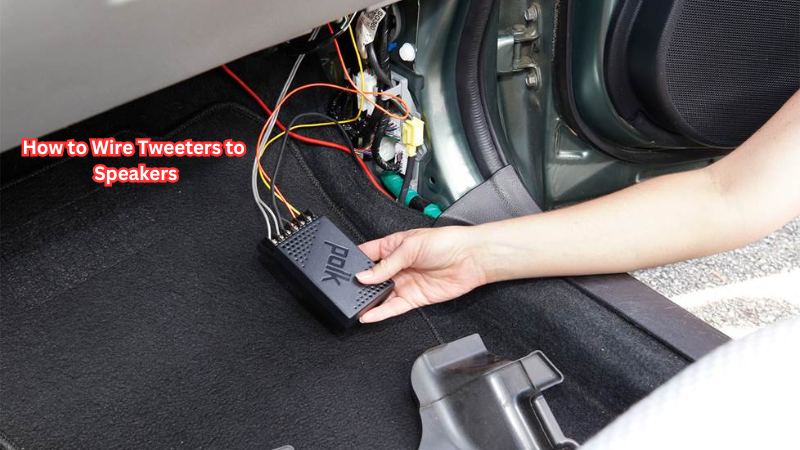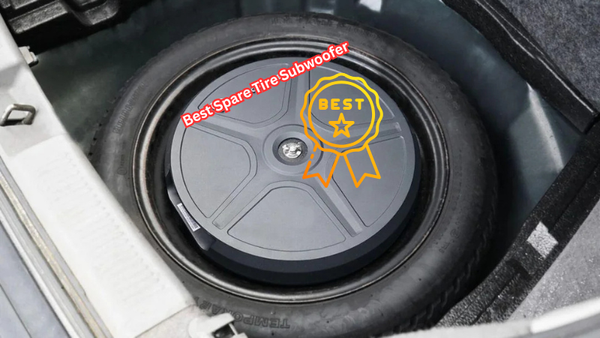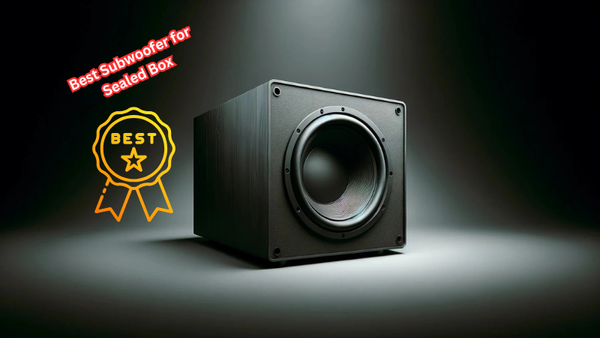Tweeters are essential components in any audio system, designed to produce high-frequency sounds, adding clarity and definition to your music. These small yet powerful speakers enhance the overall listening experience by delivering crisp and detailed audio, allowing listeners to enjoy every nuance of their favorite tunes.
Properly wiring tweeters to your speakers can make a significant difference in your sound system's performance. This guide will walk you through the process, ensuring that you achieve optimal audio quality with minimal hassle.
By following these steps, you'll unlock the full potential of your audio setup, enhancing your listening pleasure and bringing your favorite music to life with vibrant and dynamic sound.
What is a Tweeter?
A tweeter is a type of speaker designed to reproduce high-frequency sounds, typically above 2 kHz. They are smaller than woofers and mid-range speakers, but they play an essential role in creating balanced and accurate sound in any audio system.
Tweeters come in various designs, including dome, cone, horn, and planar-magnetic. Each design has its unique characteristics and performance capabilities. Regardless of the type, all tweeters work by converting electrical signals into sound waves through the movement of a diaphragm or membrane.
Why Do You Need to Wire Tweeters to Speakers?
While tweeters may seem like a small part of your overall audio system, they play a crucial role in the quality and accuracy of sound reproduction. Without proper wiring to your speakers, tweeters can't function effectively, compromising the overall performance of your audio setup.
Here are some reasons why you need to wire tweeters to speakers:
- Enhanced High-Frequency Sound: Tweeters are designed specifically for high-frequency sounds, making them essential for delivering crisp and detailed audio. By properly wiring them to your speakers, you ensure that these high frequencies are accurately reproduced, allowing you to hear every detail in your music.
- Balanced Sound: In any audio system, balance is key. If one component is not working correctly, it can throw off the entire sound. By properly wiring tweeters to your speakers, you ensure that the high frequencies are balanced with the mid and low frequencies, creating a more natural and pleasing listening experience.
- Protection for Your Speakers: Without proper wiring, tweeters can draw too much power from your amplifier, potentially damaging your speakers. By wiring them correctly, you provide a buffer between the tweeters and amplifier, preventing any damage and extending the lifespan of your audio equipment.
How to Wire Tweeters to Speakers
write in 900 words
First and foremost, it's essential to identify the type of tweeters you have and their compatibility with your speakers. This will determine the wiring method you should use.
Once you've confirmed compatibility, follow these steps to wire your tweeters to your speakers:
Step 1: Gather Your Materials
Before beginning any wiring project, make sure you have all the necessary materials on hand. Here's what you'll need:
- Tweeters
- Speakers
- Speaker wire
- Wire cutters/strippers
- Crimp connectors or soldering iron (depending on your preferred method)
Step 2: Identify Positive and Negative Terminals
Your tweeter and speaker will each have two terminals, one positive and one negative. It's crucial to identify these terminals correctly to ensure proper wiring.
The positive terminal is typically labeled with a "+" sign or a red dot, while the negative terminal usually has a "-" sign or black dot. Double-check your Twitter and speaker manuals if you're unsure.
Step 3: Measure and Cut Speaker Wire
Measure the distance from your amplifier to where you'll be mounting your tweeters. Add an extra foot of wire for each speaker to allow for flexibility during installation.
Using wire cutters/strippers, cut two equal lengths of speaker wire, ensuring they are long enough to reach from the amplifier to each tweeter location.
Step 4: Strip the Wire and Connect to Tweeters
Strip about half an inch of insulation from each end of your speaker wire. Then, twist the exposed strands together to prevent fraying.
Using either crimp connectors or a soldering iron (depending on your preferred method), connect one end of the wire to the positive terminal of each tweeter, and the other end to the negative terminal. Make sure the connections are secure.
Step 5: Connect to Speakers
Next, connect the other ends of the wires to your speakers in a similar fashion. Again, make sure they are securely connected.
Step 6: Mount Tweeters
Mount your tweeters in their designated locations, following the manufacturer's instructions. Make sure they are securely mounted and positioned correctly for optimal sound performance.
Step 7: Connect to Amplifier
Finally, connect the remaining end of your speaker wire to their designated outputs on your amplifier. Again, ensure that the connections are secure.
These steps may vary slightly depending on your specific tweeter and speaker models, so always refer to the manufacturer's instructions for guidance.
What Are the Safety Precautions When Wiring Tweeters?
Whenever working with electrical components, it's crucial to take safety precautions to avoid any accidents. Here are a few safety tips to keep in mind when wiring tweeters:
- Ensure that all power sources are turned off before beginning your project.
- Use caution when handling wires and components, as they may have sharp edges or points.
- Never touch the exposed metal parts of wires while they are connected to an active power source.
- Double-check all connections before turning on your audio system.
How to Manage Wires for a Clean and Professional Look
Wires can often be a source of clutter and mess, especially in an audio setup. However, with some proper planning and organization, you can achieve a clean and professional look for your wired tweeters.
One way to manage wires is by using cable ties or wire looms to keep them neatly bundled together. This not only reduces clutter but also prevents any potential tripping hazards.
Another option is to run wires through walls or under carpets to hide them from plain sight. However, this may require professional installation and should be done with caution to avoid damaging any existing wiring in your home.
Lastly, consider investing in wireless tweeters if you want to eliminate the need for visible wires together. This will not only give your setup a cleaner look but also provide more flexibility in speaker placement.
Tips for Optimal Sound Performance
To get the best audio quality from your newly wired tweeters, here are a few tips:
- Positioning: Tweeters should be placed at ear level for optimal sound performance. If possible, mount them in locations where they are closer to the listener than the other speakers for a more immersive experience.
- Experiment with Placement: Don't be afraid to experiment with the positioning and angle of your tweeters to find the sweet spot for optimal sound. This may require some trial and error, but it's worth it for a better listening experience.
- Crossover Settings: Adjusting the crossover settings on your amplifier can also greatly impact the sound performance of your tweeters. Play around with different settings until you find the perfect balance between high, mid, and low frequencies.
FAQs
Do I need crossover for tweeters?
Crossovers are not necessary for tweeters, but they can greatly improve sound quality. Some speakers may already have built-in crossovers, so it's essential to check before purchasing separate ones.
Can I wire my tweeters to my existing speaker wires?
It is possible to wire your tweeters to your existing speaker wires, but it's not recommended. Tweeters require a specific frequency range and power output, which may differ from your main speakers. It's best to use dedicated wiring for optimal sound performance.
Can I use any type of wire for connecting my tweeters?
No, it's essential to use proper gauge and quality speaker wire for connecting your tweeters. Lower gauge wires are thicker and can handle more power, while higher gauge wires have thinner strands and are suitable for lower power applications.
How do I test if my tweeters are wired correctly?
To test if your tweeters are wired correctly, play some music with a wide range of frequencies. If the sound quality is clear and balanced, then they are likely wired correctly. However, if the sound is distorted or unbalanced, there may be an issue with the wiring.
Conclusion
Incorporating tweeters into your speaker system can significantly elevate your audio experience by highlighting intricate high-frequency sounds and adding a layer of clarity to your music.
By meticulously following the wiring steps outlined in this guide, you ensure a seamless integration of tweeters, guaranteeing optimal performance and longevity. Enjoy the enriched soundscape as your favorite tracks come alive with newfound vibrancy and detail.
As you relish this enhanced audio journey, consider exploring additional improvements such as upgrading other components or experimenting with speaker placement to further refine your setup. Embrace the power of sound and take your listening experience to new heights with confidence and creativity.





